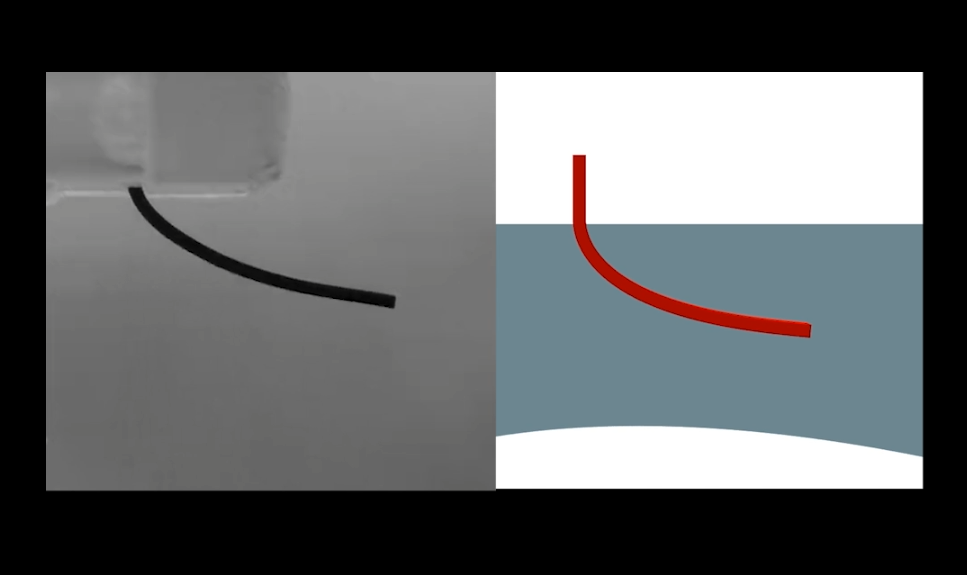Assistant Professor, Republic of Korea Air Force Academy
RESEARCH
My major research focus is to solve multi-coupled problems between 1) geometric non-linearity, 2) material non-linearity, 3) fluid-structure interactions through physics-based simulation. I am also interested in/working on physics-assisted, physics-based machine learning to solve this interesting problem.
Advanced Materials
Suitu Wang, Sangmin Lim, Seelay Tasmim, Manivannan Sivaperuman Kalairaj, Laura K Rivera‐Tarazona, Mustafa K Abdelrahman, Mahjabeen Javed, Sasha M George, Yoo Jin Lee, M Khalid Jawed, Taylor H Ware
The growth of multicellular organisms is a process akin to additive manufacturing where cellular proliferation and mechanical boundary conditions, amongst other factors, drive morphogenesis. Engineers have limited ability to engineer morphogenesis to manufacture goods or to reconfigure materials comprised of biomass. Herein, a method that uses biological processes to grow and regrow magnetic engineered living materials (mELMs) into desired geometries is reported. These composites contain Saccharomyces cerevisiae and magnetic particles within a hydrogel matrix. The reconfigurable manufacturing process relies on the growth of living cells, magnetic forces, and elastic recovery of the hydrogel.
Topical Reveiw
Flagella and cilia are slender structures that serve important functionalities in the microscopic world through their locomotion induced by fluid and structure interaction. With recent developments in microscopy, fabrication, biology, and modeling capability, robots inspired by the locomotion of these organelles in low Reynolds number flow have been manufactured and tested on the micro-and macro-scale, ranging from medical in vivo microbots, microfluidics to macro prototypes. We present a collection of modeling theories, control principles, and fabrication methods for flagellated and ciliary robots.
BACTERIA BUNDLING PROPULSION
Bacteria Inspired Multi-Flagella Propelled Soft Robot at Low Reynolds Number
We present a macroscopic soft robotic hardware platform and a computational framework for a physically plausible simulation model of the multi-flagellated robot. The fluid-structure interaction simulation couples the Discrete Elastic Rods algorithm with the method of Regularized Stokeslet Segments. Contact between two flagella is handled by a penalty-based method due to Spillmann and Teschner. We present comparison between our experimental and simulation results and verify that the simulation tool can capture the essential physics of this problem. The stability and efficiency of a multi-flagellated robot are compared with the single-flagellated counterpart.
MACHINE LEARNING & HYDRODYNAMICS
ML-based Regularized Stokeslet Methods
We use machine learning, neural network to develop a reduced-order model for a high fidelity simulation of low Reynolds number flow hydrodynamics. We couple geometric non-linear geometry with such a hydrodynamic model and verify with existing methods. The simplification made through training the neural network eliminates the need for high-dimensional matrix inversion problems.
MAGNETIC SOFT ROBOTS
Ferromagnetic soft robot simulation
We report a fast ferromagnetic robotic simulation that could be faster than real-time. The physics of magnetization and external field is included in fast elastic simulation (ferroDER). We are currently testing and preparing multiple showcases.
UNDERWATER SLENDER STRUCTURE
Mooring line dynamics
We simulate the underwater slender structure's dynamic response based on linear wave theory. Contact with seabed, fluid-structure interaction, and non-linear geometry are coupled to create a difficult problem to solve. Our solution could help monitor and active control of offshore underwater structures such as Mooring lines.



